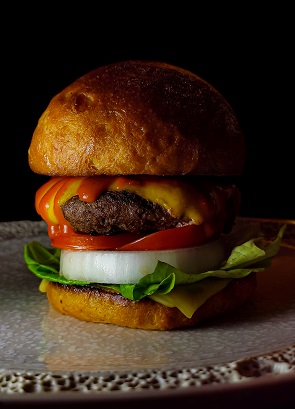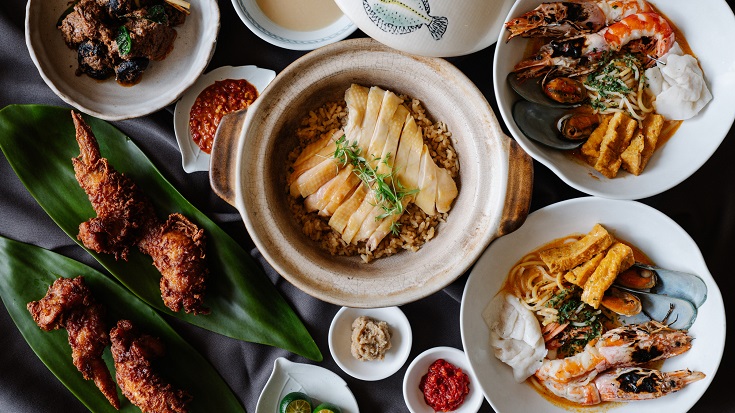Across the world, as fine dining restaurants felt the effects of shutdown notices in their countries due to the Covid-19 pandemic, one recurring theme seemed to surface. Three-MICHELIN-starred Alinea in Chicago was one of the first to pivot, offering a contactless, carryout meal of braised shortrib Wellington, mashed potato and crème brulee. Within a week, they were selling 1,000 portions a night. Burgers sealed the deal for two-star Noma in Denmark, with its cheeseburger and other variations flying out of their garden pop-up.
What happened is that they drew on comfort or nostalgic foods that would likely not appear on their modern or progressive menus. In Singapore, several MICHELIN-starred restaurants also shared the same conclusion, whether by design or coincidence. Some chefs yearned for their childhood dishes, while others saw the demand for wholesome, everyday meals that could be delivered to employees who were adjusting to work-from-home situations.
In the current Phase 2 of Singapore’s reopening of the economy, a mix of options are available now that restaurants have resumed dine-in operations. Good news though: Many of the successful new concepts are here to stay, so you can still get your fill of comfort food at home.

Last chance
The humble burger by one-MICHELIN-star Alma by Juan Amador caused a stir when it was introduced for takeaway lunch boxes. Alma’s special blended Angus burger is served with cheddar and an Asian touch in gochujang sauce on homemade brioche bun, but you need to act soon if you haven’t tried it – it’s currently only available for takeaway on Mondays 3-6pm, now that the restaurant has reopened for dining in.
Blink and you probably missed these: three-star Les Amis offered their deluxe housemade ice creams, from Ardeche chestnut with rum to Blue Mountain coffee. Two-MICHELIN-starred Zen furnished picnic baskets filled with in-house condiments such as truffle puree and Swedish pastries.
Cloud kitchens are here to stay
Concepts with more longevity were also borne from the one-MICHELIN-star restaurants of Beppe de Vito, Roberto Galletti and LG Han. Opting for cloud kitchens, de Vito’s Il Lido Group (including one star Braci) launched Grammi for wholesome Italian cuisine while Han went ahead to launch Miss Vanda by Labyrinth, which was originally meant to be a physical space serving elevated hawker cuisine. Galetti launched two casual concepts, Burrata Joy and Gustavo Lapasta, out of Garibaldi’s kitchen initially, but has since explored different options for the two successful brands.

A digital dining platform launched on 10 June, Grammi comes closest to a full restaurant menu with over 50 menu items as well as artisanal grocery items. Calling it a “fast and accessible” concept for Italian comfort food, founder Beppe de Vito had initially planned a brick-and-mortar store but instead made a digital pivot in order to launch quickly. Operating as a cloud kitchen out of one of the Il Lido Group’s restaurants, the plan is to move Grammi into a full-time cloud kitchen, shares de Vito. Highlights of the menu include octopus salad with Japanese cucumbers and capers, Porchetta sandwich with iberico piglet, apple and smoked cheese and Mediterranean vegetable casseroles, the items are homey and wholesome enough for everyday lunching al desko or at home, but with enough of restaurant touches to keep it from being simple.

Walter Visioli, general manager at Garibaldi, says that the team analysed the market at the start of Circuit Breaker, and saw the gap in the market for one of their most popular ingredients. Burrata Joy was created in May in a lifestyle approach to offer healthy bowls based around burrata, whether customers preferred to buy retail or opted for a signature creation such as the Napoli, comprising burrata, romaine lettuce, tuna flakes, olives, French beans and roasted bell pepper with balsamic dressing. To avoid delivery disruptions, they teamed up with a trusted supplier to make the burrata in Singapore, using cheese and milk imported from Italy. The response was so good that they’ve since moved Burrata Joy out of Garibaldi’s kitchen into a joint venture Deliveroo Kitchen, and are now considering a physical flagship store. The same success was enjoyed by Gustavo Lapasta to deliver gourmet pasta options, and which now also operates out of the Deliveroo Kitchen. “People are now more comfortable with ordering online and are continuing to work from home,” observes Visioli. Even as Garibaldi reopened on 19 June, they’ve successfully created a new base of customers online.

Chef-owner Han Liguang of one-MICHELIN-star Labyrinth, which remained closed during Circuit Breaker, wasn’t staying idle. Although he had the name and concept for Miss Vanda prior to the Covid-19 outbreak, he had initially intended to open a physical restaurant space to offer casual Singaporean dishes under one roof. While Labyrinth revolves around the deconstruction and reinterpretation of traditions, Miss Vanda – which now operates as a cloud kitchen out of Labyrinth’s space – is more representive of hawker favourites, with the consistency and quality of restaurant standards. Its first three weeks in June was a hit, with 50-60 orders a day although margins were thin. “But importantly Miss Vanda forged its own identity, reaching out to critics and customers from the casual segment. We had affirmation from guys like Makansutra founder KF Seetoh,” says Han.
He also had the opportunity to just “throw it out there”, quickly establishing business numbers, SOPs, marketing and signature favourites of this new brand, a process that would otherwise have required much more investment. The team discovered that Miss Vanda’s most popular items were the deep-fried boneless har cheong (shrimp paste) chicken wings, Bincho grilled yakitori chicken satay and Hainanese style sweet-sour Kurobuta pork collar, instead of Labyrinth classics like the banana grilled otah with whole locally farmed silver perch, which meant that it was reaching a new audience from Labyrinth. Digging deep into his own family recipes for chicken rice and kaya has been a sort of balm during a period where “you don’t know what to prepare for anymore as a business,” he shares.
With more options than ever, it’s never been a better time for customers to try out different cuisines from these enterprising chefs.






















